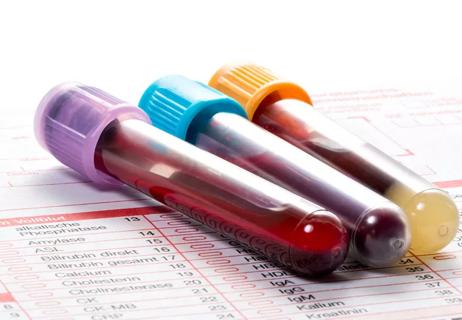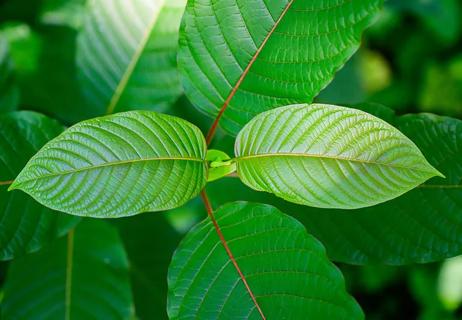
One in three U.S. adults has high blood pressure. Do you know if you’re one of them? This condition — which means that the force of the blood pushing against your artery walls is too high — is known as “the silent killer” because it rarely shows symptoms.
Advertisement
Cleveland Clinic is a non-profit academic medical center. Advertising on our site helps support our mission. We do not endorse non-Cleveland Clinic products or services. Policy
If it’s not treated, high blood pressure (also known as hypertension) can damage your arteries and significantly increase your risk of heart attack, stroke, heart failure and kidney failure. But you can turn those risks around.
Blood pressure readings have two numbers, a top (systolic) and a bottom (diastolic) number. Lowering your systolic blood pressure to a maximum of 120 mmHg has been shown to reduce these risks. There are two ways to accomplish this: By making lifestyle changes and by going on medication. While some people can lower blood pressure with lifestyle changes alone, the two approaches are complementary.
“Blood pressure management is often 70% lifestyle and 30% medications,” says preventive cardiologist Luke Laffin, MD. “They have to go together. If you take blood pressure medication but don’t make lifestyle changes, your medications won’t work effectively.”
The term “lifestyle changes” implies that you’ll need to change your entire life to bring your blood pressure down, but even small changes can go a long way — and over time, you can build up to making larger changes.
Dr. Laffin weighs in on some of the recommended natural (non-pharmaceutical) modifications you can make to lower your blood pressure.
Advertisement
If you haven’t been diagnosed with hypertension, there’s debate about whether your salt intake actually impacts your blood pressure. If you’ve already been diagnosed with hypertension, though, listen up!
“Cutting your salt intake is probably the most important way to lower your blood pressure,” Dr. Laffin says. “In fact, studies show that a low-sodium diet has the same effect as one and a half to two blood pressure medications.”
The average American consumes 3,500 mg of sodium a day, which is more than double the American Heart Association (AHA) recommendation of no more than 1,500 mg (or about one teaspoon) of salt per day. Because this amount is so strict, though, Cleveland Clinic providers set the limit at 2,300 mg.
“The AHA recommendation is an aspirational goal,” Dr. Laffin says. “If you can get there without changing your diet a radical amount and being miserable, that’s great — but getting to 2,300 milligrams or less can go a long way.”
Sodium is hidden in many foods, so avoiding it can be difficult, but it’s doable. Choosing smart salt substitutes like potassium chloride can help. It takes about 10 to 14 days to adjust to a low-sodium diet, and then some foods will begin to taste too salty for you.
IMPACT: Lowering your sodium intake from a whopping 3,500 mg to a much more moderate 2,300 mg should drop your blood pressure by 2 to 3 mmHg. Limiting your sodium intake to the AHA’s recommend stricter 1,500 mg a day should drop your blood pressure by 5 or 6 mmHg.
Potassium can help lower your blood pressure because it gives your kidneys an assist in getting rid of excess sodium. And as you’ve just learned, lower sodium levels mean lower blood pressure levels.
“Potassium is the inverse of sodium,” Dr. Laffin explains. “Too much sodium increases blood pressure, and too little potassium increases blood pressure.”
A diet that’s high in fast food, processed food, carbohydrates, potatoes and meat is a diet that’s likely to be low in potassium, which contributes to high blood pressure. Instead, try to take in 3,000 to 3,500 mg of potassium per day by eating foods like:
There’s a big caveat here, though: If you have kidney disease, be careful not to consume too much potassium, as your kidneys may not be able to get rid of it.
IMPACT: If you have hypertension, increasing your potassium intake to recommended levels should drop your blood pressure by 4 to 5 mmHg.
Advertisement
The DASH diet — which stands for Dietary Approaches to Stop Hypertension — was created specifically to lower blood pressure. In fact, the research into this diet is so positive that it’s now considered one of the most important non-pharmaceutical measures for controlling hypertension.
“The DASH diet is a really balanced diet that’s rich in fruits, vegetables and whole grains and can be done in combination with a low-sodium diet,” Dr. Laffin says. “It can be really helpful in lowering your blood pressure, especially when you work with a dietitian or nutritionist to drill down on the basics.”
People who adopt the DASH diet usually meet low-sodium and high-potassium guidelines, and may lose weight, too.
IMPACT: Following the DASH diet can drop systolic pressure up to 11 mmHg — and it can do it in just a few weeks. And that’s not the only major benefit: It could also lower your risk of breast cancer, colorectal cancer and metabolic syndrome.
Darn it, desk jobs. “Being sedentary — meaning you’re not physically active — can increase blood pressure,” Dr. Laffin warns. So cue up the Olivia Newton-John because it’s time to get physical!
Exercise, especially aerobic activity, is incredibly effective in reducing blood pressure. It forces your blood vessels to expand and contract, which keeps them flexible. It also increases blood flow and encourages the creation of new blood vessels, among other benefits.
Advertisement
Other options include dynamic resistance exercises (like bicep curls with weights) and isometric resistance exercises (like wall push-ups). They have the potential to lower your blood pressure by 4 to 5 mmHg, but it depends on how often you do them, how many repetitions you do and, with dynamic resistance exercises, what weights you use.
IMPACT: Doing 150 minutes of aerobic activity a week can lower blood pressure by 5 to 8 mmHg. And don’t be alarmed if you see your blood pressure rise immediately after you’ve worked out. “Blood pressure increases as we exercise, but is significantly lower following exercise,” Dr. Laffin notes. “That’s normal.”
Drinking alcohol puts you at risk of developing high blood pressure. And if you’ve already been diagnosed with high blood pressure, alcohol may be a contributor.
Dietary Guidelines for Americans defines “moderate drinking” as two drinks or less per day for men and one drink or less per day for women. But your height, weight and overall health all play a role in what’s safe for you, as an individual, so ask your healthcare provider for more personalized insight.
And drinking less isn’t easy for everyone. If you’re having trouble changing your alcohol consumption habits, you may have alcohol use disorder — and help is available.
Advertisement
IMPACT: If you have hypertension and regularly drink more alcohol than recommended, scaling back may drop your blood pressure by as much as 4 mmHg.
As your weight increases, so does your blood pressure, which means that losing even a few pounds can go a long way toward lowering your systolic blood pressure.
“The fat cells that we get around our mid-section are metabolically active cells,” Dr. Laffin says. “They secrete all kinds of hormones, which ultimately raise blood pressure.”
Of course, it’s almost never as simple as, “Just lose weight.” Weight is a nuanced, complex topic, and lots of medical and lifestyle-related factors play a role. But here’s the thing: If you’re doing your best to follow steps one through five on this list, weight loss is likely to follow — especially if you’re working with your healthcare provider to make sure you’re doing things right.
IMPACT: Every loss of 2.2 pounds should result in a drop of 1 mmHg in blood pressure.
Dr. Laffin adds a few more recommendations that he feels are important, though there’s less evidence of their direct impact on blood pressure.
A quick internet search will reveal dozens of other natural ways to lower blood pressure. But while they may be effective, the evidence is limited or questionable. For example, be wary of claims that various foods, spices, herbs and vitamins can lower your blood pressure.
“You can probably find a study or two on each of them saying they lower blood pressure, but these have never been robustly studied,” Dr. Laffin states. “If you’re serious about using natural ways to lower blood pressure, choose methods that have stood the test of time.”
To hear more from Dr. Laffin on this topic, listen to the Health Essentials Podcast episode, “Combating High Blood Pressure.” New episodes of the Health Essentials Podcast publish every Wednesday.
Learn more about our editorial process.
Advertisement

Your veins might look blue, but that’s not the color of the blood flowing inside

A psychologist shares ways to cope with a lack of closure

A Q&A on the controversial opioid withdrawal aid

How to see past outdated, prevailing attitudes and views

Many overlook the signs of a slow heart rhythm

Studies highlight importance of social support

Type 2 diabetes isn’t inevitable with these dietary changes

Applying a hot or cold compress can help with pain